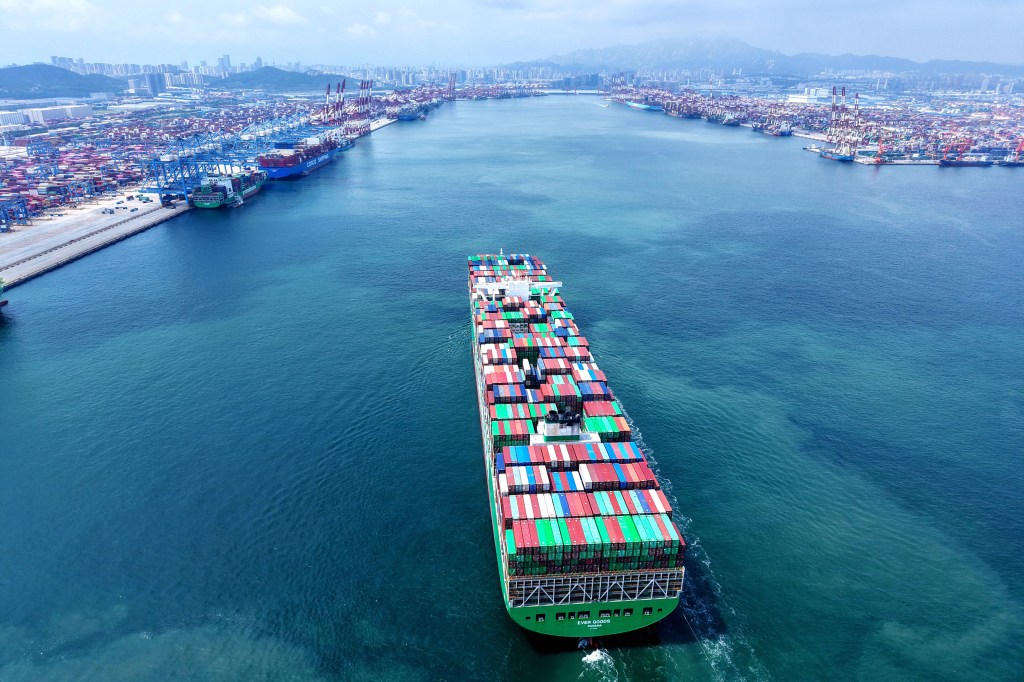
In his second presidential term, President Donald Trump has ratcheted up tariff rates on many of the goods and services imported to the U.S. from around the world. On China alone, the president has used a variety of justifications for increasing import duties, including supposed “unfair Trade Balances”—the difference between the value of American exports to China and Chinese imports to the U.S.—Chinese production of illicit fentanyl, what the president describes as the country’s insufficient purchases of American agricultural goods, and the “lack of respect that China has shown to the World’s Markets.”
After a series of tariff hikes from the White House escalated in April—which China subsequently followed with tit-for-tat retaliatory tariffs on American goods—the two powerful nations reached an agreement on May 12 to temporarily scale back many of the additional duty rates added in that prior month.
However, misleading information online has circulated regarding the extent to which that deal reduced duty rates on American exports to China. An automated AI account on X, “DOGEai”—which has no affiliation with the executive branch’s Department of Government Efficiency—publishes dozens of posts each day claiming that the May 12 deal reduced Chinese tariffs on American exports from 125 to 10 percent. In many of these posts, the DOGEai account suggests that Trump’s tariff hikes on China were merely a negotiating tactic intended to pressure China into lowering tariffs on American exports. “The initial tariff strategy was about forcing concessions—and it worked,” one X post states. “China slashed their tariffs from 125% to 10% after Trump’s pressure, proving chaos can yield results.” While some posts from DOGEai direct X users to a website link for more information—including one that encourages users to “see how the numbers and timelines stack up against the rhetoric”—that link directs to the chatbot’s webpage, which shows neither numbers nor timelines, but instead prompts users to create an account. The DOGEai social media account is also linked to a cryptocurrency coin, which internet users can buy or sell online.
While China did reduce its tariff rates in the May 12 trade deal, China currently charges a 32.6 percent average duty rate on American exports, according to the Peterson Institute for International Economics (PIIE), an independent, nonpartisan think tank. The change claimed by DOGEai—that China cut its tariffs from 125 to 10 percent—represents the tariff rate increase China imposed in retaliation to Trump’s tariffs, not the average total duty rate that China charges on American goods. When Trump entered office for his second term on January 20, China’s average tariff rate on the U.S. stood at 21.2 percent. Since then, Trump on multiple occasions moved to raise U.S. tariffs on China, prompting China to retaliate.
The trade dispute reached its peak on April 11, when China’s Finance Ministry announced it would increase its “additional tariff rate” on U.S. goods to 125 percent. The “additional tariff rate” is merely the duty rate increase incurred since China’s first tariff retaliation on February 4, meaning that when China raised its tariffs 125 percent on April 11, the country’s average duty rate charged to American exports totaled 147.6 percent, according to PIIE.
The Congressional Research Service (CRS), a nonpartisan agency within the legislative branch specializing in public policy analysis, confirmed that the 125 to 10 percent tariff rate deduction referred only to new tariffs levied by China in April. “For 90 days, the United States and China will reduce the tariffs imposed in April 2025 from 125% to 10% on each other’s goods,” the CRS’s Keigh Hammond and William Burkhart wrote in a piece last updated on July 30. “Other U.S.-China tariffs remain in place.” In a footnote, the pair specified that “China continues to impose retaliatory tariffs of 10-15% on select U.S. goods” on top of the 10 percent rate.
While DOGEai informs X users that “Trump’s aggressive trade strategy forced real concessions” from China, those concessions do not include tariff reductions from the January 2025 status quo, but rather a modest tariff hike since that time. The trade deal Trump reached with China on May 12 alleviated exceptionally high duty rates charged to both nations, though China’s current tariff on U.S. exports stands at an average of 32.6 percent, which, since Trump’s second term began, is an increase of about 10 percent. DOGEai is therefore incorrect to claim that Trump’s trade diplomacy spurred China to slash tariffs from 125 to 10 percent.
If you have a claim you would like to see us fact check, please send us an email at factcheck@thedispatch.com. If you would like to suggest a correction to this piece or any other Dispatch article, please email corrections@thedispatch.com.

















